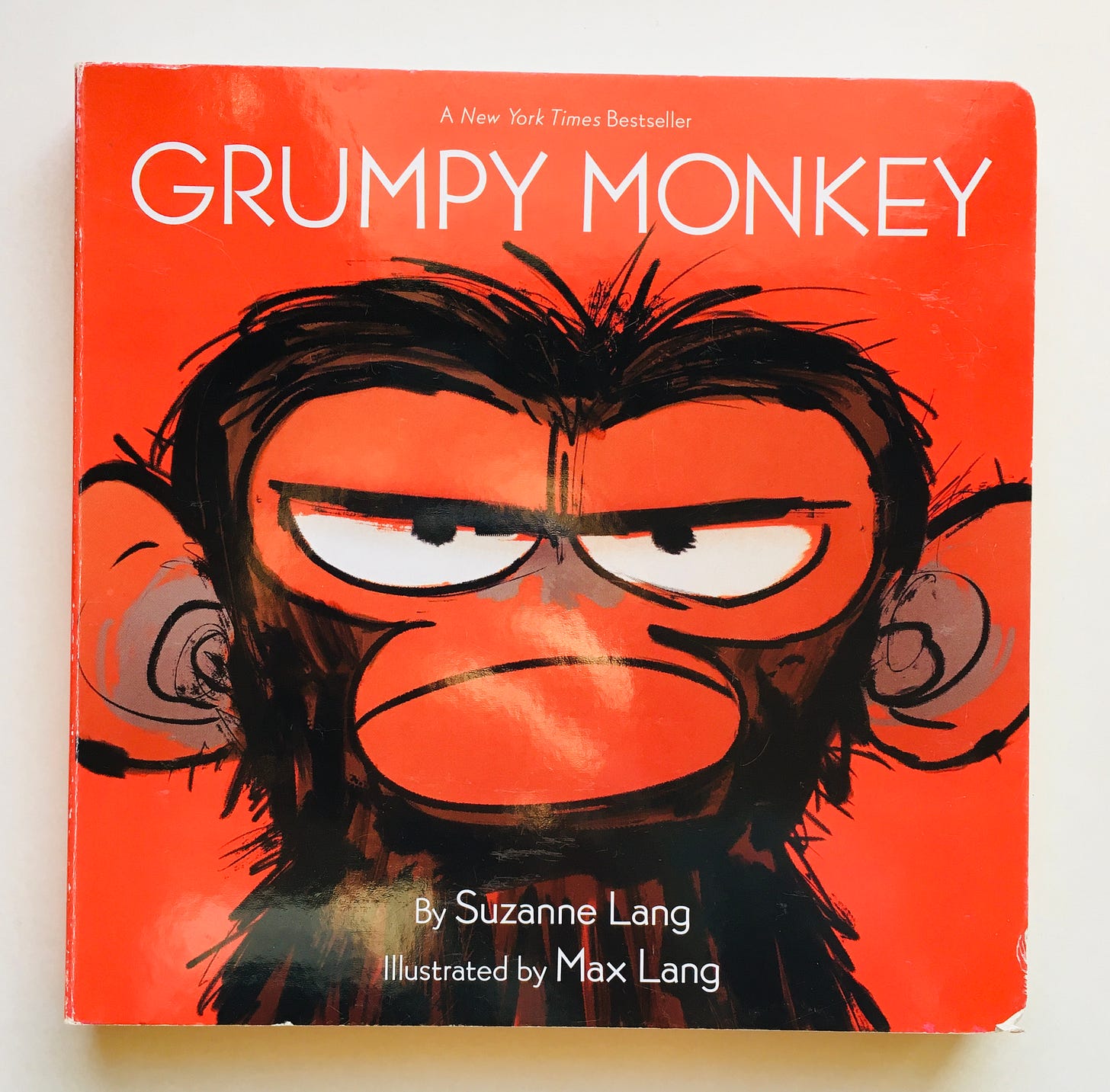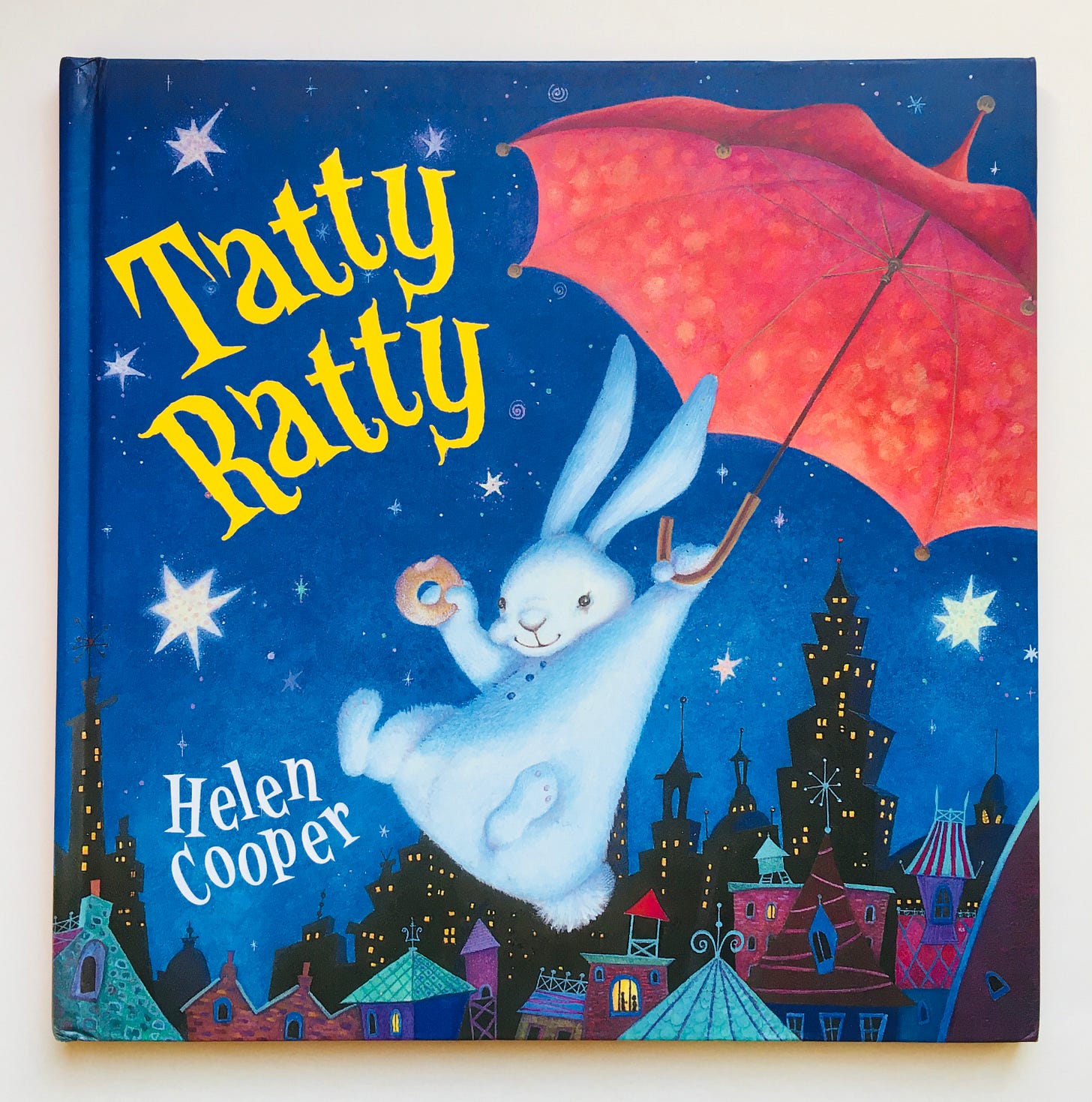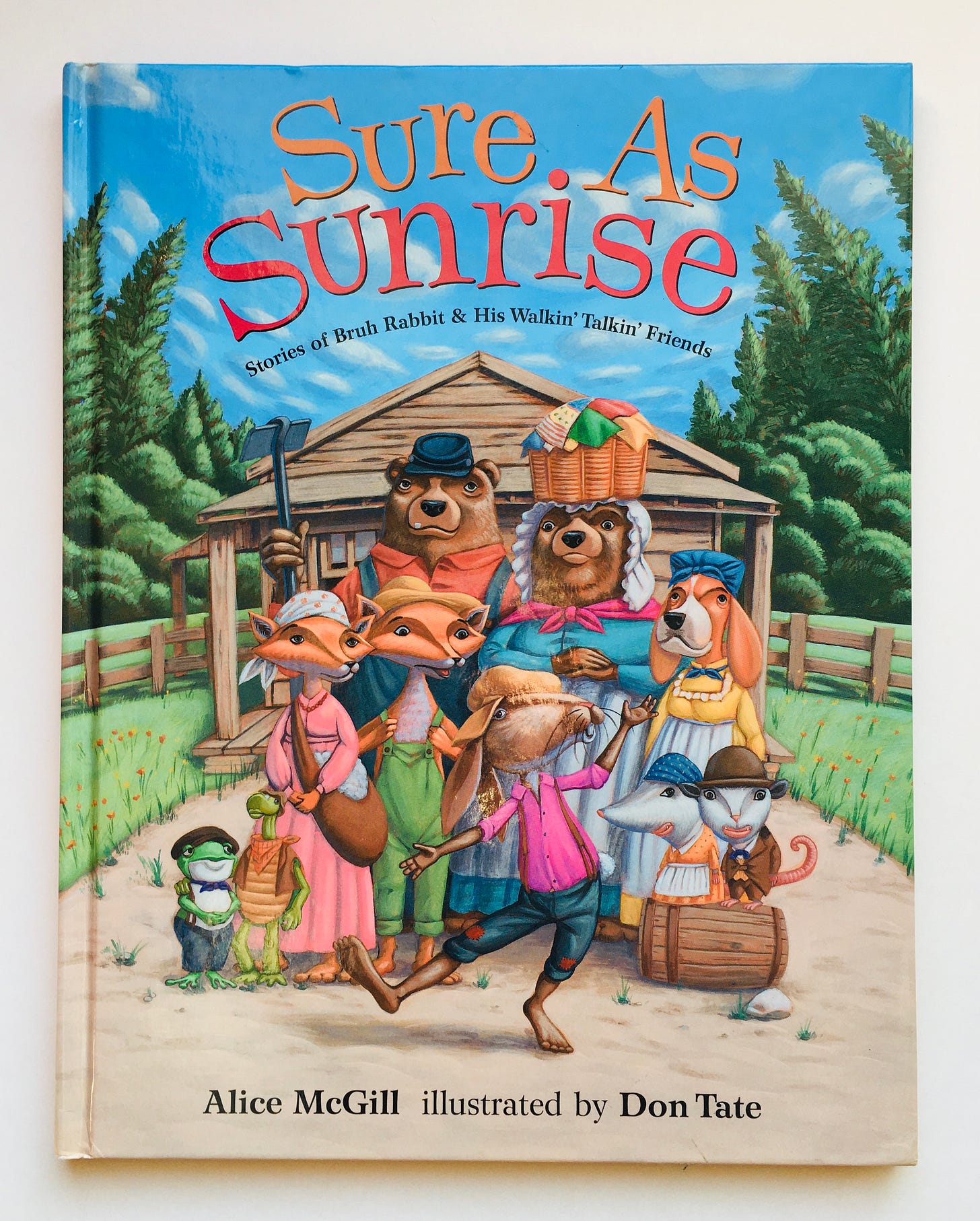Hi, hi, hi.
I hope this issue finds you well, or at least keeping your head above water. (Sometimes you gotta set the bar low, and that’s okay!)
Let’s get right to it, shall we?
Two Problems for Sophia by Jim Averbeck, illustrated by Yasmeen Ismail (2018)
Sophia has two problems: she feels “happysad” — happy that she has Noodle, her pet giraffe, but sad that he comes with “giraffe-size problems,” like his tongue, with which he uses to give slurpy, too-sloppy kisses, and his snoring, which is so loud, no one else can sleep when he does.
Sophia’s sleep-deprived mother and her Grand-mamá, who “can’t bear a sloppy kiss,” want to get rid of Noodle, but Sophia won’t have it: instead, she will solve these problems. She does some research and fashions a solution for Noodle’s snoring, but it doesn’t work. She keeps trying. She builds prototypes; she tries a fresh approach; she designs complex, detailed blueprints. She even cuts up her favorite blue tutu until she creates what can only be called a giraffe CPAP machine, a mask that hushes his snoring and finally offers the family some peace. The kissing? Well, that can’t be solved, so Grand-mamá just accepts it and smooches — sloppily — Noodle back.
I am in love with Ismail’s watercolor and colored pencil illustrations, which are full of life and energy, as well as this sweet story, which is packed with what an old writing professor of mine used to call “50-cent” vocabulary words (like perdurable, ossicones, and capacity ratio, to name a few). This title will inspire questions like, “What does that mean?” and conversations fueled by asking, “How would you solve this?” as well as giggles — and in my book (pun 110% intended, always), that’s the most important part.
Grumpy Monkey by Suzanne Lang, illustrated by Max Lang (2018)
I love just about any book that makes our human emotions more… well, human, and somehow, even though he’s a monkey, Grumpy Monkey does just that. (Plus, let’s be honest: he’s very grumpy, and I relate.)
One wonderful day, Jim Panzee wakes up to discover nothing is right — the sun is too bright, the sky too blue, the bananas too sweet. He is deeply engaged in what we call “fussing” in my family, and he’s confused. His kind, empathetic neighbor, Norman the gorilla, suggests that maybe Jim is grumpy — which Jim doesn’t take too well. “I’m not grumpy!” he insists over and over, until it eventually becomes, as it is wont to do, “I’M NOT GRUMPY!”
There is a metric ton of social-emotional learning packed into this entertaining story, as Suzanne Lang does a masterful job of having Norman point out Jim’s body language, as well as demonstrates what is not helpful, in having different characters try to cheer and jostle Jim out of his bad mood. Finally, Norman and Jim sit together quietly, and Jim is able to admit: he is grumpy. It’s just what he needs right now. And in saying it, he feels a bit better.
Max Lang’s digital illustrations are bright and comical and do an excellent job of showing all that social-emotional stuff his wife is telling (they make a great team). I think the reason this book was a New York Times bestseller is that it speaks to something we’ve all experienced, kids and adults alike — the sometimes-complicated process of feeling our true, messy, even ugly feelings, especially when we don’t want to feel them.
There isn’t a person (or a monkey) alive who can’t relate, if they’re willing to admit it.
Tatty Ratty by Helen Cooper (2001)
We are big fans of Helen Cooper in our house, and I’ve never quite understood why she’s not more famous — her books are sure-fire hits with little kiddos (see my review of The Boy Who Wouldn’t Go to Bed, one of my most highly recommended titles for toddlers, in issue No. 18 and my review of Pumpkin Soup in my 2020 special edition on fall, in case you have managed to live this long without Pumpkin Soup, in which case, you have about six months to remedy that, and you absolutely should).
Tatty Ratty is the story of what happens to the title character when he is once again lost by the little girl who loves him, Molly. Molly’s parents help look for Tatty Ratty, but alas, he cannot be located before bedtime, so they invite Molly to sleep in their bed for the night, so she won’t be lonely. It’s here, head on the pillow, that Molly worries about what is happening to Tatty Ratty while he’s gone, and her parents paint fantastical possibilities for her, reassuring her that Tatty Ratty is having grand adventures out in the world. Molly gets into it, and soon they are all imagining: Tatty Ratty is riding a train, eating porridge with the Three Bears, coming home with Cinderella, sailing with pirates, riding a dragon to visit the Man in the Moon.
Instead of the happy ending one might expect — that Tatty Ratty shows up safe and sound the next morning — he never reappears in his present form, but the next day the family goes to the Kingdom of Bunny store to look for him and sure enough, there “he” is on the shelf, ready to go home again.
Once, about 15 years ago, I put my beloved polar bear, Arctic, through the wash accidentally with the sheets from our bed, and I cried so hard I hyperventilated, thinking he was done for (he wasn’t)*, so reading this book gives me anxiety at the thought of losing something so precious — but these things do happen, and Cooper, with her dreamy, lush oil paint illustrations and her incredibly reassuring story, offers a unique path to accepting loss and finding peace by imagining the places a loved one might be when they’re no longer with us.
*If you do that math on that, I was a 24yo woman bawling over a stuffed animal. I don’t care. I still sleep with him every night and I’d cry just as hard today, no question.
Sure as Sunrise: Stories of Bruh Rabbit & His Walkin' Talkin' Friends by Alice McGill, illustrated by Don Tate (2004)
I have mentioned before that the classic Brer Rabbit stories hold a special place in my husband’s heart, as his father told him those tales at bedtime as a child, and at his request, I’ve sought out as many different iterations as I can. This is one among many that we now own, but I like it as an introduction to this particular folklore — there are only five stories here (most collections have many more), none too long, and not all focus specifically on Bruh Rabbit (Brer/Br’er/Bruh are used interchangeably in this oral tradition) but also include his friends, Bruh Possum, Bruh Snake, Bruh Cooter (just to name a few — Brer Rabbit has a whole host of associates, many of whom get up to even wilder things than he).
Tate’s acrylic paint on textured paper illustrations are as exaggerated as McGill’s stories (which, she explains in the introduction, she first learned as a child from her elder neighbor, Neptune Clark), and this fits: there is always a lot going on in Brer Rabbit stories, even if the only action is mischief and trickery.
This is a beginning collection, to be sure, but a wonderful one to introduce you to these quintessential word-of-mouth American stories, first brought to these shores by enslaved Africans, who created Bruh Rabbit as both a spokesperson for their oppression and a character who could adapt to new surroundings, cultivating good sense and a sense of humor in the effort to survive. These are witty, funny, and often brilliant tales for hard times, and one of the things I love most about reading them to my children (and overhearing my husband tell them at bedtime, passing down orally what was passed down to him) is knowing that I am playing a small part in keeping this legacy alive.
That’s all for today, but I want to let you know that I’m releasing my 2022 special edition on spring next week — if you want a whole smorgasbord of books to celebrate the coming season (or the season that’s already arrived for those of you in USDA Hardiness Zones greater than 5a), this is the issue for you! I’ve got reviews of seven excellent books, as well as an extensive booklist broken down into titles for babies and toddlers, older readers or read-alouds, poetry (of course), and everything else.
It’s for subscribers only, but it’s easy to become a subscriber for only $6/month or $65/year (subscribing annually gets you one month for free).
(Need more information about what you get for becoming a paid subscriber? You can find that here.)
Free or paid, there’d be no point to any of this without you. I’m grateful for you!
Sarah









The name Jim Panzee makes me immediately want to get that book. Hah!